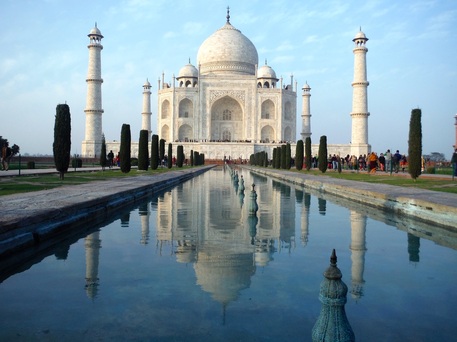
The story starts in the year 1592 with the birth of Prince Khurram, the son of Jehangir, the fourth Mughal emperor of India and the grandson of Akbar the Great. Price Khurram was born to a life of royalty and unsurpassed privlidege, his name changed to Shah Jahan in accordance to custom because he was the rightful heir to the throne after his father.
When he was 14 years old, Shah Jahan was walking with his entourage in the Meena Bizarre and witnessed a girl selling silk and glass beads. She was the most beautiful thing his eyes had ever seen and it was love at first sight. The girl was named Arjumand Banu, a Muslim Persian princess that was a year older than him. Upon meeting her, Shah Jahan immediately ran back to his father, the emperor, and declared his undying love and that he wanted to marry her. The love was mutual and the wedding was set and the young couple wed in 1612.
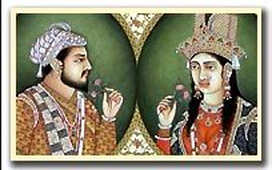
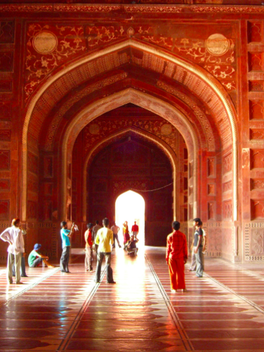
It took 22,000 workers and artisans 22 years to build the Taj Mahal, which means “Crown Palace”. (There are claims that after completion, Shah Jahan had the hands cut off of all his craftsmen so they could never build something that beautiful again, though these claims aren’t proven.) The head architect Shah Jahan chose for the job, Ustad Ahmad Lahauri, was not actually from India, but a Persian from Iran, so the late queen’s origins would be honored. They used 1,000 elephants to transport the heavy building materials like slabs of marble and stone. When it was done, the total price tag was 32 million Indian rupees, or the equivalent of $1 billion at the time, which would be much more in today’s dollars.
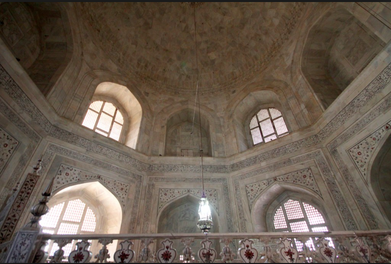
Built on the southern bank of the Yamuna River in Agra, the Taj Mahal consisted of a spiraling domed mausoleum. Centered inside was an octagonal marble and jewel-encrusted chamber, which was supposed to be the resting place of Mumtaz Mahal. But her body was actually housed in a sarcophagus far below that very spot, in accordance with Muslim doctrines.
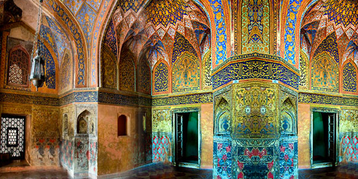
Once completed, the Taj Mahal was just the first part of Shah Jahan’s tribute to the inextinguishable love for his bride. He planned to build a second grand mausoleum – this one in all black – directly across the river from the Taj Mahal, joined with a connecting bridge like two lovers holding hands, and there he would be buried when he died.
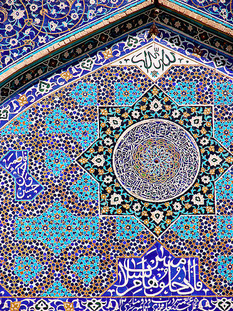
But Shah Jahan’s son, Aurangzeb, seeing the opportunity to dispose his ailing and heart-stricken father (and perhaps worried that he might spend the whole family fortune on more construction) usurped his father, the Emperor, and took power in 1658. He placed Shah Jahan under house arrest in a tower of the nearby Red Fort of the rest of his days, his only solace that he could see the Taj Mahal out of his one little window. Shah Jahan sat in prison for 8 years until he died in 1666, still in love with the princess he came across in the market so many decades before. His body was placed in a tomb right next to hers in the center of the Taj Mahal, the only thing that is a-symmetrical in the whole structure.
Over the centuries, the Taj Mahal changed hands with each new Emperor, ruler and invader. The British changed the gardens from the roses and daffodils that were originally planted to the Wimbledon-like cool green lawns you see today. During World War II and later during conflicts with the new nation at war, Pakistan, false scaffolding and structures were built around the Taj Mahal to confuse and deter enemy bomber pilots.
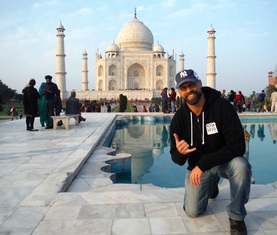
"Not a piece of architecture, as other buildings are, but the proud passion of an emperor's love wrought in living stones."
-English poet, Sir Edwin Arnold
-Norm :-)
Check out the new book, Travel With Norm
 RSS Feed
RSS Feed